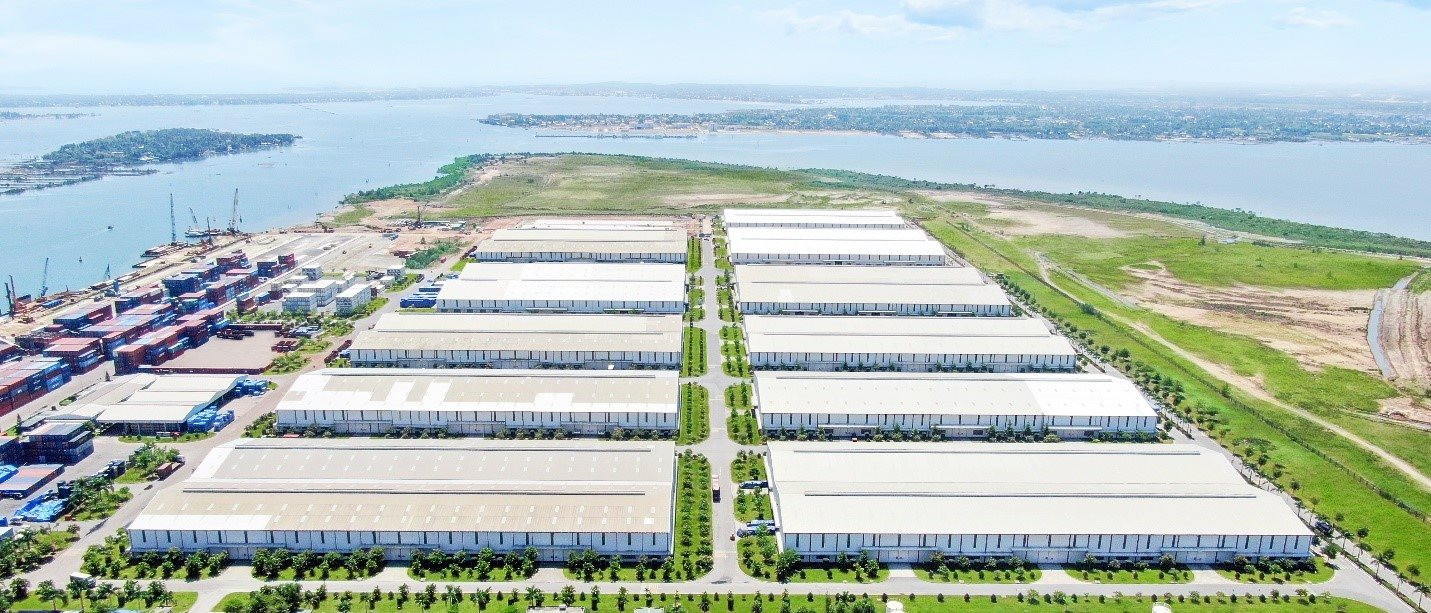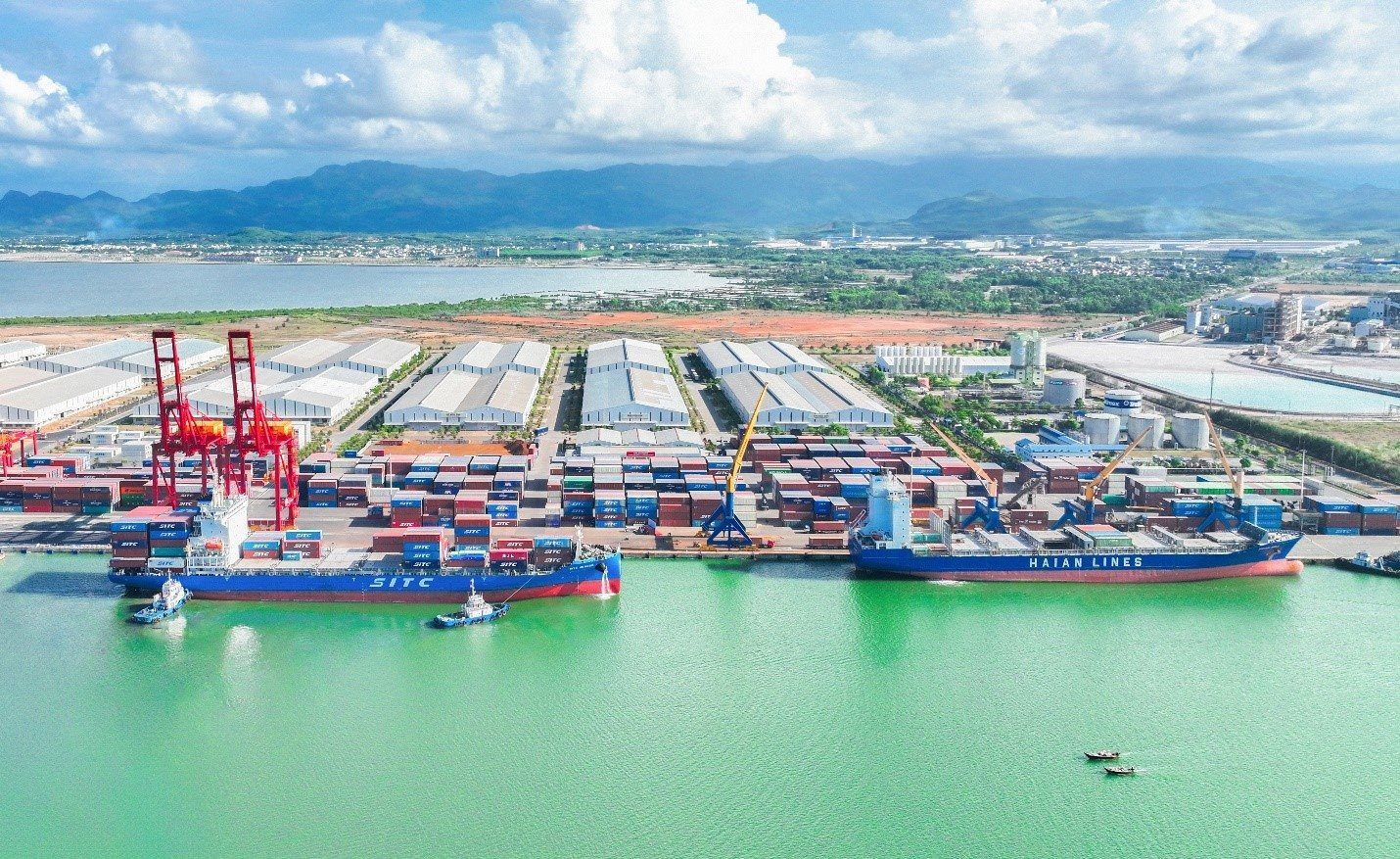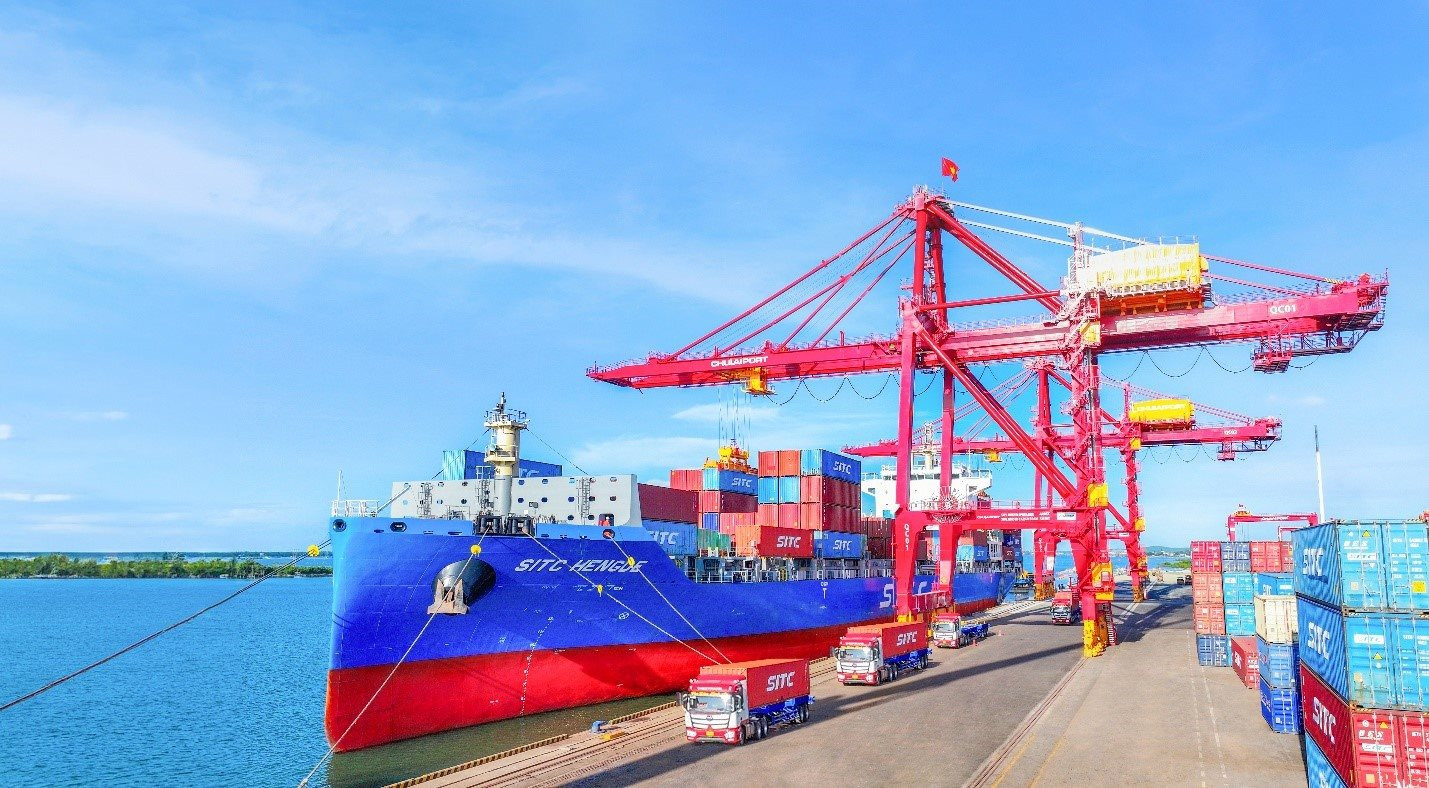Role of Chu Lai Port in logistics in Central Vietnam
(QNO) - After more than 10 years of construction and development, Chu Lai Port has established itself as a major commercial port in Central Vietnam and the Central Highlands, contributing to the economy of Quang Nam province.

Strategic location
The strategic location of Chu Lai Port is capable of seamless connectivity to key transport arteries and infrastructure networks in Quang Nam and Central Vietnam.
Specifically, the port is situated 2 kilometres from the horizontal axis, including National Highway 1, the Da Nang - Quang Ngai expressway, the coastal road (connecting Da Nang, Hoi An, and Chu Lai airport), and the Ho Chi Minh Highway.
Additionally, Chu Lai Port connects to vertical routes, including National Highways 14E, 14B, and 14D.
These roads experience a high level of traffic for goods transportation as they are part of the route from the southern provinces of Laos to the Bo Y International Border Gate (Kon Tum) and the Nam Giang International Border Gate.
The port also serves as an important gateway, ensuring intra-regional and inter-regional connectivity through coastal roads and the East-West economic corridor and integrating seamlessly with the national and international transport networks.
According to the Quang Nam provincial planning for 2021–2030, with a vision to 2050, the province will focus on developing aviation, seaports, and logistics services.
Along with the provincial strategy in the maritime sector, Chu Lai Port holds significant potential to develop into a leading container port and logistics service hub in Central Vietnam and the Central Highlands.
This region is also central to manufacturing industries and export, such as textiles, footwear, wood, furniture, metals, heavy industries, oil and gas, and energy.
Concurrently, it is a place of major economic zones, including Thaco Chu Lai, Bac Chu Lai, Tam Thang (Quang Nam), VSIP, and Dung Quat (Quang Ngai)
A key role in the logistics chain
Chu Lai Port serves as the central point in the multimodal logistics chain, combining road transport, seaports, and sea transport. This connectivity facilitates the production and business activities of enterprises, thereby optimising profits and enhancing competitive advantages.

Currently, exports from the Central Highlands provinces, southern Laos through the International Border Gates of Nam Giang (Quang Nam), Bo Y (Kon Tum), and north-eastern Cambodia through the Le Thanh Border Gate (Gia Lai) are transported to Chu Lai Port by road. Then, they are shipped to Northeast Asia, Europe, America, and vice versa by using sea routes.
Thilogi, Chu Lai Port owner, has recently been approved to join the U.S. Federal Maritime Commission (FMC), becoming an intermediary carrier for Vietnam-US trade routes and vice versa. Thilogi's direct contracts with shipping lines have helped Chu Lai Port expand its service routes to the American market, serving businesses in Central Vietnam and neighbouring regions.
According to exporters, the service route through Chu Lai Port facilitates faster, more convenient, and cost-effective access to the U.S. market.
At the same time, this service route helps FDI enterprises boost trade to Europe and America.

According to the leader of Chu Lai Port, thanks to its extensive available land, the port has the advantage of expanding its warehouse system to meet the storage needs of goods with strong growth potential in the future. This allows the port to attract a diverse range of import-export goods.
Reportedly, in the first six months of 2024, Chu Lai Port invested over VND 400 billion in equipment and vehicles, upgrading the high-capacity crane system, specialised semi-trailers for goods transportation, expanding its warehouse areas, and installing an automatic car wash system and weigh station.
By the end of July, a 50,000-ton deep-water berth is expected to come into operation. It is capable of receiving container ships with loads of 50,000 DWT.
This new berth uses modern technology in the operation and exploitation of the sea port to implement the strategy of building a green, smart port for sustainable development.
(Source: vnexpress)
